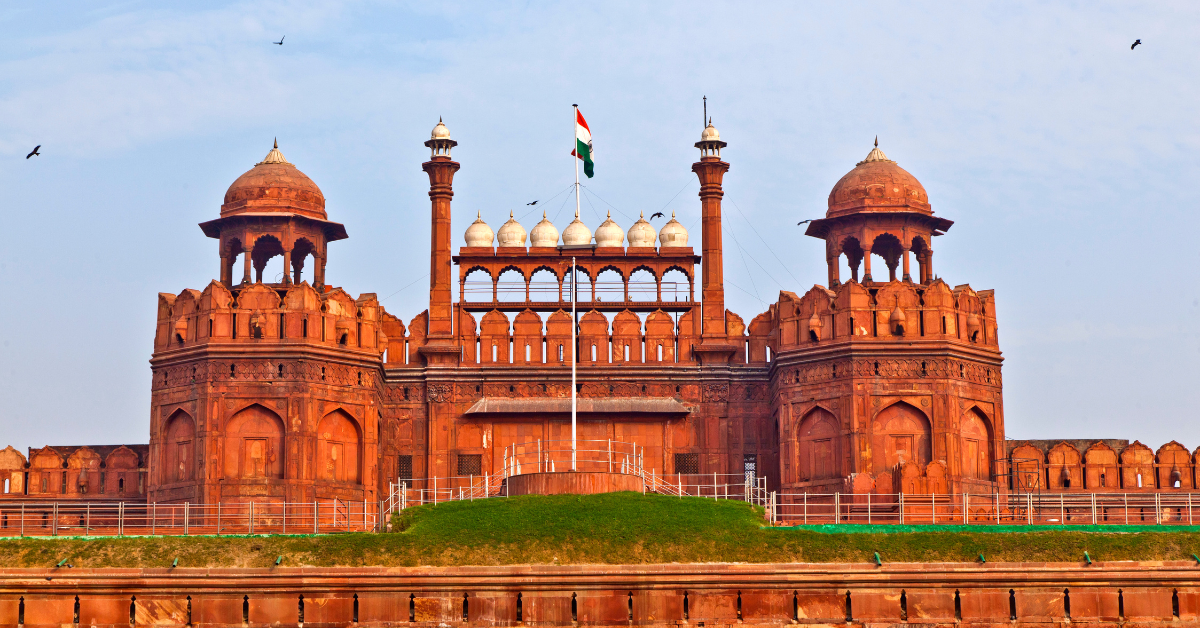In old Japanese texts, Delhi sometimes appears not as デリー in katakana but as the kanji 「德里」. This is not a coincidence but part of Japan’s history of transcribing foreign names into kanji. Understanding this helps reveal how Japanese absorbed foreign culture and language through writing.
The History of Writing Foreign Place Names in Kanji in Japanese
For a long time, Japanese developed within the Chinese character cultural sphere, so there was a custom of writing foreign place names in kanji based on their sound. For example, America was written as 亜米利加, France as 仏蘭西, and London as 倫敦. These were not translations of meaning but phonetic transcriptions using kanji. At that time, katakana was not yet widely used, so replacing foreign names with kanji made them easier to read and feel more familiar.
Examples of Kanji Transcriptions of Foreign Place Names
| Country or City | Kanji | Modern Form |
|---|---|---|
| America | 亜米利加 | アメリカ |
| France | 仏蘭西 | フランス |
| London | 倫敦 | ロンドン |
| Delhi | 德里 | デリー |
The Origin of the Kanji 「德里」
The origin of 「德里」 is clear: it was created as a phonetic approximation. The character 德 (an older form of 徳) can be read as “toku” or “doku,” which approximates the sound “de.” The character 里 is read as “ri,” matching the “li” sound. Together, they form “Derii.” Moreover, this notation was likely borrowed from Chinese, where Delhi is written as 德里 (Dé lǐ). Japanese newspapers and diplomatic documents often referenced Chinese texts, so the form was adopted directly.
Sound Correspondence in 「德里」
| Kanji | Reading | Close English Sound | Role |
|---|---|---|---|
| 德 | Toku / Doku | de / do | Represents the voiced initial sound |
| 里 | Ri | li / ri | Represents the ending vowel sound |
Why 「德里」 Fell Out of Use
In modern Japanese, 「德里」 is almost never used. The reason is postwar script standardization and the need to avoid confusion. After World War II, foreign place names were officially standardized to be written in katakana. Katakana can represent sounds directly, reducing misunderstandings and making communication easier internationally. In addition, 「德里」 strongly carries a Chinese nuance, which could cause readers to mistake it for a regular word rather than a city name.
Script Reform and the Superiority of Katakana
| Aspect | Before Reform | After Reform |
|---|---|---|
| Foreign Place Names | Kanji transcription | Katakana |
| Advantages | Familiar and authoritative | Faithful to sound, less ambiguity |
| Disadvantages | Could be misread as ordinary kanji words | Less visual weight compared to kanji |
Comparing 「德里」 with Other Transcriptions
Compared to other kanji transcriptions, 「德里」 is distinctive. While 亜米利加 (America) or 仏蘭西 (France) are longer and more elaborate, 「德里」 is only two characters, compact and easy to read, which made it suitable for newspaper headlines or maps.
Comparison of Kanji Transcriptions
| Place | Kanji | Characters | Feature |
|---|---|---|---|
| America | 亜米利加 | 4 | Decorative, symbolic |
| France | 仏蘭西 | 3 | Standard phonetic form |
| London | 倫敦 | 2 | Split phonetic match |
| Delhi | 德里 | 2 | Compact, readable |
Where 「德里」 Still Appears Today
Today, 「德里」 is hardly used, but it still survives in old maps, prewar newspapers, and historical documents. In Chinese contexts, 德里 is still the standard way to write Delhi, so Japanese learners reading Chinese may encounter it. Museums and reprinted editions of old works may also reproduce 「德里」 to maintain historical authenticity.
Where 「德里」 Can Still Be Found
| Medium | Usage | Current Status |
|---|---|---|
| Old maps | Listed under 印度 (India) | Preserved as historical usage |
| Newspapers (prewar) | Diplomatic or travel articles | Found in reprints only |
| Chinese texts | Still written as 德里 | Active phonetic transcription |
| Museum displays | Used in historical reproductions | Often shown with katakana alongside |
Key Points for Foreign Learners
When researching Delhi in Japanese, foreigners should be aware of both デリー and 德里. In some old indexes and dictionaries, 德里 appears first. You also need to watch for the difference between the old character 德 and the modern 徳.
Study and Research Tips
| Point | Explanation |
|---|---|
| Katakana form | デリー is the modern standard |
| Old form | Both 德 and 徳 appear in old texts |
| Chinese connection | Chinese still uses 德里 |
| Research tip | Search using both デリー and 德里 |
Conclusion
The writing of Delhi as 「德里」 is a historical remnant of Japan’s custom of transcribing foreign place names into kanji. By combining 德 and 里, the sound “Derii” was approximated, influenced by Chinese sources. After Japan’s postwar script reform, katakana became the official standard, and 「德里」 disappeared from everyday use. Yet, it remains in old documents, maps, and museum exhibits, carrying cultural and historical weight. Knowing 「德里」 is not only about recognizing an old spelling, but also about understanding how Japanese has absorbed and adapted foreign words over time.






